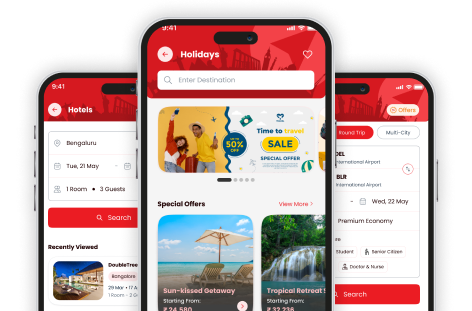justify;">A Southeast Asian country will make you wonder with amazement at its royal palaces is Cambodia. The capital of the country is Phnom Penh. The official language of the nation is Khmer while the two most widely spoken languages here are English and French. The official English name of the country, however, is “The Kingdom of Cambodia”.
Cambodia currency information
One of the most important aspects of any country is its currency. The economy of the country greatly depends on the money. Even in school, you remember learning about the concept of currency. Every country has a unique currency name. Similarly, Cambodia's currency name is Cambodian Riel. The symbol of the currency is CR while the code is KHR. It is the National Bank of Cambodia that issues the currency for circulation throughout the country.
If you have to check the most sought-after exchange rate, it has to be Riel to USD. One Cambodian Riel is equivalent to 0.00025 USD. In Indian currency, it is INR 0.01750. The coins that are in use and in higher frequency are 50, 100, 200, and 500. Banknotes that are in use are 50, 100, 200, 500, 1000, 2000, 5000, 10000, 20000, 50000, and 100000.
History of Cambodian currency
What we see and witness today has gone through a lot of changes since inception. Just the way we have seen a change in the types of mobile phones that have evolved over the years. Cambodia's currency is no different. It has also undergone a number of changes and tweaks until the final so far.
The journey truly began from the year 1953 when two Piastres banknotes were introduced. At that point in time, Riel was considered equivalent to that of Piastre. When the first division of Cambodian Riel took place, it was divided into 100 cents. In the year 1959, an alteration took place and it became 100 sen. There was no difference between Riel and Piastre and both were in use for circulation. The first bills of Riel were named Piastre. Riel became the national currency of Cambodia in the year 1953 although the total replacement of Piastre took place in 1955. Officially, one can consider 1955 as the year when Cambodian Riel came into official existence.
Best place to exchange currency in Cambodia
One can get into trouble if the right currency exchange medium is not known. If you are travelling to Cambodia for a leisure trip or for business, you need to know the exchange rate and the places where you can exchange your country’s currency to that of Riel.
You can exchange your currency by withdrawing from an ATM. The fee that you may have to pay is approximately $4 to $5. LY Hour Exchange is another method to exchange your money to Cambodia currency. There are several branches in Cambodia, especially in the capital. There are several money changer shops too. You can take advantage of them. They may charge a small fee. Banks are considered to be one of the safest ways of exchanging money. You can find the best branch by asking a local there or visiting one of the banks yourself.
Digital transactions in Cambodia
Initially, Cambodia was not the market where everyone used digital modes of payment. Of late, things have changed. Now, most of the shopkeepers accept digital methods of payment compared to cash payment. Cambodia money can be used through various digital modes such as credit card, debit card, digital wallets and QR Code scan. This has helped people from any part of the world visiting Cambodia make payments flawlessly. It has further helped in sales of goods booming in the country.
Although there are a number of shops using digital payment methods these days, there are still a few shops that accept only cash. The choice is yours. Do you want to exchange your money using any of the exchange methods and pay in cash or use the digital and handy method? Convenience is the key to any kind of travel. Such payments definitely add to the luxury of travel.
Tipping in Cambodia
People across the globe like to tip on general or special occasions. A few people have the habit of tipping no matter how the service was. This way, do remember, that you may not be helping in improving the service for others, in the future. It is always helpful to tip those who truly bring a new meaning to hospitality. When in Cambodia, you can use your Cambodia money to tip people at restaurants and cafes or even the bell boy in your hotel. Depending on how much you want to pay, decide the tip. It may be a small amount for you but a big achievement for the server and a huge motivation for him or her. So tip to feel good!
....Read Less




